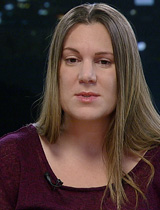State schools began to implement Arizona's College and Career Ready Standards, and the transition is not only felt among students but among those in front of the classroom as well.
What was known as the Common Core Standards has been installed in 47 states, with the goal to teach children to be better critical thinkers. While many argue the method is a great means to prepare students for a successful future, others worry that it is one more "corporate reform" that could ultimately fail.
During Friday's broadcast of Arizona Week, educators and parents discussed the pros and cons of the standards, and explained what Arizona is doing to prepare its teachers to efficiently use them in their classrooms.
Many tools have emerged - from courses to workshops and after-school study sessions - for teachers to get a hands-on learning experience of how they will incorporate the standards as they begin to roll out from school to school.
School districts are responsible for ensuring their teachers are up to speed, said Ronald Marx, dean of the UA's College of Education.
Marx explained that the college's faculty has been working with Southern Arizona school districts in helping teachers understand the meaning of Common Core, which involves developing a more in-depth understanding in students of subjects, such as mathematics, using language to be able to explain what they're learning rather than just robotically memorizing formulas.
 Maggie Hackett, curriculum instructor, Sunnyside Unified School District.
Maggie Hackett, curriculum instructor, Sunnyside Unified School District.Maggie Hackett, curriculum instructor at Sunnyside Unified School District, has been touching base with the district's educators, making sure they become comfortable with implementing the standards.
She said there has been some push-back on their side, but all changes bring that insecurity at first.
"Change is hard, but they (teachers) are understanding (it) and once they start implementing it with the students, and start seeing the things that the students are capable of (doing) then they get excited about teaching again," Hackett said.
While the transition may be a little more noticeable among the teachers, some parents are also feeling these changes at home when it's homework time.
"The math homework, specially, is where I notice (the changes), because you have to show your work, and if you have a fair number of math questions, and you have to show in each single question exactly how you arrived to your answer, it takes some time," said Ann-Eve Pedersen, mother of a middle school student in the Tucson Unified School District.
Outside of home, Pedersen has raised some concerns about the Common Core. She said she's afraid the standards are part of a long line of "corporate reforms...not developed by educators." Pederson is also worried about how the district is going to afford what is needed to invest in teacher training for the success of the Common Core.
"The state is requiring all these new assessments...and still doesn't know how it is going to pay for them, which is about $9 billion more a year," Pedersen said. "And, schools never received money for new textbooks...for new training, etc."
Marx said he believes the state is in a good path with how it's preparing its teachers. But he also said that, in order for the standards to bring positive results in the education system, there needs to be a significant investment in its development.
Amy Bohla, former teacher and a Catalina Foothills School District parent, said she also thinks the districts are doing a good job with the implementation process, but that there is a lot of weight on the teachers' shoulders.
"They didn't have a lot of say in (the standards' development), and to throw one more thing at them...it is going to take a while to see results," Bohla said.
Marx predicted that it will take an entire generation of students for the state to see the effects of Common Core. But, ultimately, the reported 40 percent of Arizona students who are not ready for college when they graduate high school, will hopefully make great progress as the standards gain momentum.

By submitting your comments, you hereby give AZPM the right to post your comments and potentially use them in any other form of media operated by this institution.